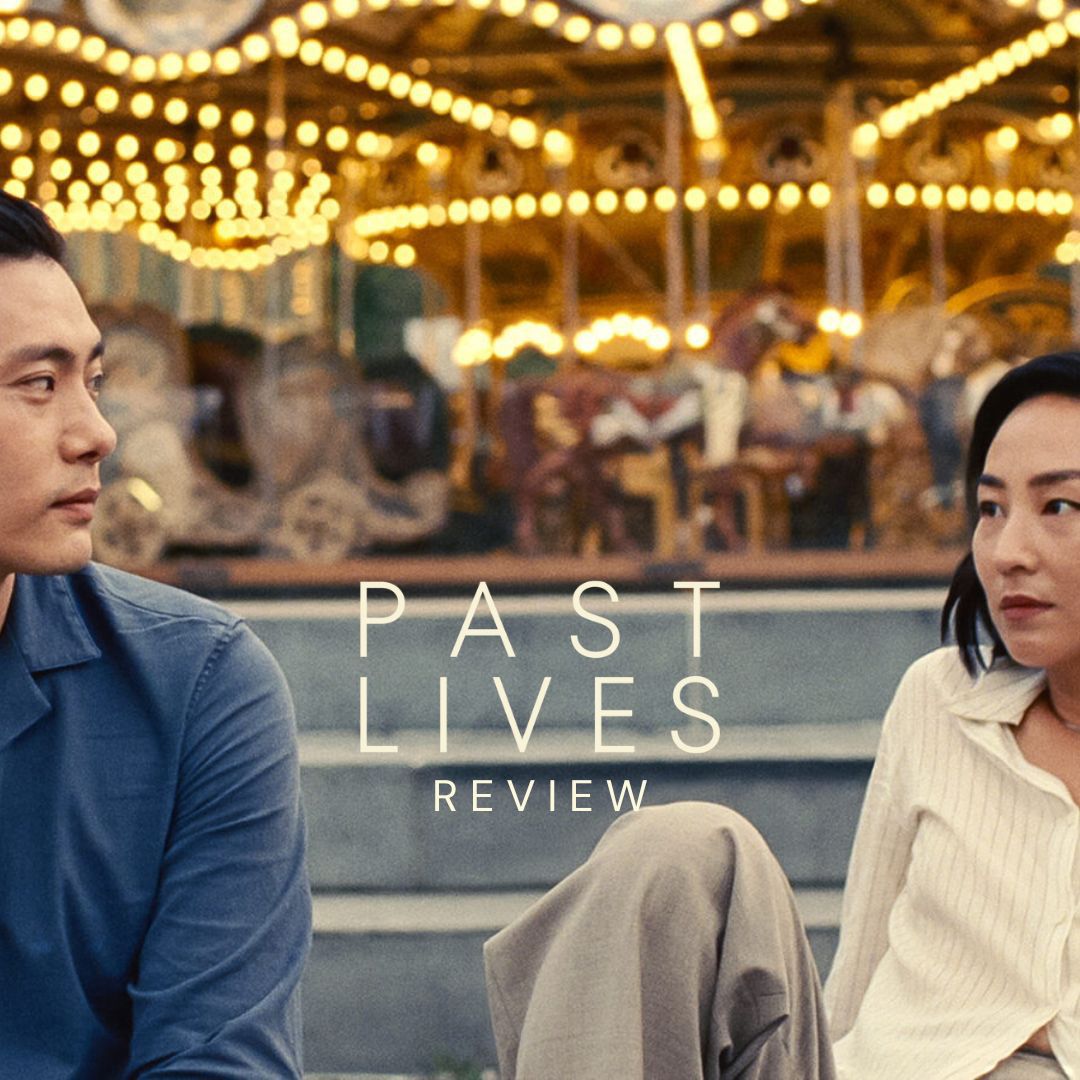Please visit response.fsu.edu for official FSU updates and resources.
Past Lives Review

As I left the SLC following my third viewing of Past Lives, I heard an overwhelming murmur of phrases which included, “It’s so good!” or “The characters are so real,” and “That was so sad!” all of which are valid assessments. However, while I, too, was repeating many of these phrases, I couldn’t help but feel like the movie was deserving of more than an assessment similar to so many others. In its brisk 106-minute runtime, Past Lives excels in the task of taking the audience into the lives of a mere three characters, giving very little in terms of information on who they are or any in-depth character traits, and bringing us to tears, as we wallow in the idea of lost time.
So, what exactly makes it ‘so good!’? From the performances, writing, soundtrack, and theming, the film has a lot working in its favor as director Celine Song flexes her masterful understanding of reality. The thematic heart of the film is reinstated multiple times as ‘In-Yun,’ which in the words of Nora means “Province. Or… fate.” This galaxy of potential maintains the characters in its orbit as they struggle to find themselves in a connection that seemingly transcends space and time. Following three distinct points in the life of Nora (Greta Lee), each a precise twelve years apart, she is forced to confront the life she has formed with her husband Arthur (John Magaro) while a seemingly fated reunion with her childhood sweetheart Hae Sung (Teo Yoo) pulls her into the darkest unvisited corners of her mind.
From the beginning, the audience is presented with one of the first ingenious trademarks of the film: the structure. As the film opens, they are placed into the role of a bystander in another person’s story, questioning how our three protagonists may be connected in a scene we are fated to come back to. The film then jumps to 24 years earlier as Nora and Hae Sung develop their childhood romance. This immediately kickstarts a sense of imagination in the viewer as they begin to subconsciously piece together what will happen between the two scenes, regardless of the inevitable context we will and will not receive. This is once again repeated in a pivotal scene following Nora and Arthur’s first kiss, transitioning from a blossoming romance to a twelve-year relationship and a seven-year marriage, leaving the audience to fill in the gaps once again as they so choose. However, the film doesn’t want to give the wrong idea, as Arthur takes a moment to relish the hypocrisy of the story in what I believe to be the best scene of the film. Arthur brings to question his role in the fairy-tale-like story that he has found himself in, where he would undoubtedly be the “evil white husband getting in the way of true love,” forcing the viewer to reexamine their own understanding of Arthur’s role in the film. Although one may hope to have their marriage be rocky from the beginning and see that the film will logically end with Hae Sung proving himself over Arthur, this is not that kind of story, and it isn’t fairy-tale.
Instead of being presented as a suave, heart-stealing debonair, Hae Sung is presented as a shy, reserved, and insecure young man hoping to reconnect with a woman he once loved, and perhaps always will. Regardless of Nora’s descriptions depicting Hae Sung, as said in the third act of the film, as “very masculine,” the film introduces him hunching over around a table with friends, comforting one following a breakup, proceeded by him the next morning sprawled out across his bed in sweatpants and an ill-fitting shirt. The film consistently tries to remind the audience of how they want this film to go, fairy tale ending and all. As Nora and Hae Sung spend their first afternoon in twelve years walking along the Hudson River, they stand alongside a railing surrounded by a multitude of kissing couples, poetically placed in front of a carousel as they continue to move in circles. Mirroring the opening scene, the audience is forced to question what all these couples are doing here, how they may have met, how Hae Sung and Nora feel about the situation, and if they may join this ensemble of PDA. The film never sheds light onto the questions the audience holds. Instead, the film gives the viewer the little context they desperately crave: a look into Nora and Arthurs's relationship, as well as what Hae Sung has been doing over the past twelve years with a partner of his own.
Meanwhile, Arthur continues to have the film working against him, as the aforementioned ‘masculinity’ of Hae Sung is juxtaposed by the otherwise effeminate presentation of Arthur. From his fetal position in the “chicken wings” scene to his rather undeniably average build, he, in his own words, “can’t compete” with the admittedly idealistic view of Hae Sung that Nora appears to have in her head. Arthur begins to crack amidst his otherwise confident persona as he and Nora lie in bed. Finally, amidst the casual conversations and the heartfelt reunions, the audience is granted access to a moment of true intimacy between the couple, bringing to question the legitimacy of their whole relationship. This scene floods the audience with a steady bombardment of the characters’ greatest fears and uncertainties as they begin to unravel the simplicities of their lives, questioning if there could have been more. From the heartbreaking loneliness brought on by “you make my life so much bigger, and sometimes I wonder if I do the same for you” to the climactic, “you dream in a language I can’t understand,” the film recognizes the lack of transparency in its subject. By revealing so little about why the characters feel the way they do, such as why Hae Sung has stayed in love with Nora for over 24 years or how Arthur feels during the conversation at the bar between Nora and Hae Sung, there is too much left up to interpretation and imagination from the viewer. Instead of letting us into the minds of these characters, the audience is instead left to become the characters and dream for themselves of what is to come or what could have been.
In the film's climactic moment, the audience is finally returned to the bar, this time earning their long-awaited glimpse into the conversation between our three characters. It is here that Hae Sung lets out his pains of seeing Nora with another man while still understanding that it is the right thing for her life, a message she can’t help but doubt following her assessment of her own life earlier in the film as, “this is where I ended up, so this is where I’m supposed to be.” Nora chooses to relish in the possibilities of how they could have met in their past lives, as a bird and a branch or two strangers on a train. The possibilities are endless. Yet, eventually, the night must end, and this phase of her life with it. In their final frame together, Hae Sung proposes that this too may be a past life and that if that is true, then he’ll see her wherever they meet again. As the film closes with Hae Sung sitting in the backseat of an Uber on his way to the airport, it allows the viewer to make a conclusion for themselves, to become fate. Will our characters find themselves together once again, perhaps another twelve years in the future, or has the carousel finally made its last rotation as the lights turn off for the night?
Past Lives is undoubtedly my favorite film I have seen this year, and one of the most compelling stories I have ever heard. So, while I may not be able to pin down exactly what makes the film ‘so good’, I don’t think I need to. One of the biggest points of the narrative structure is how much the film leaves up to the viewer to fill in the gaps, and perhaps that poeticism is just exactly why I cannot pin down one singular aspect that makes it so effective. Everyone will undoubtedly have different moments they love about the film, and different reasons they connected with it. Although In Yun may only be something that Asian people use to get Americans to sleep with them, I believe that the thousand layers which connect all who love this film will keep it with us no matter where we are all fated to be.
Written by Cooper Lyon
Art by Cooper Lyon



